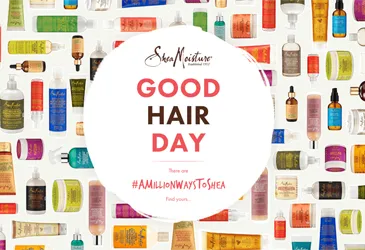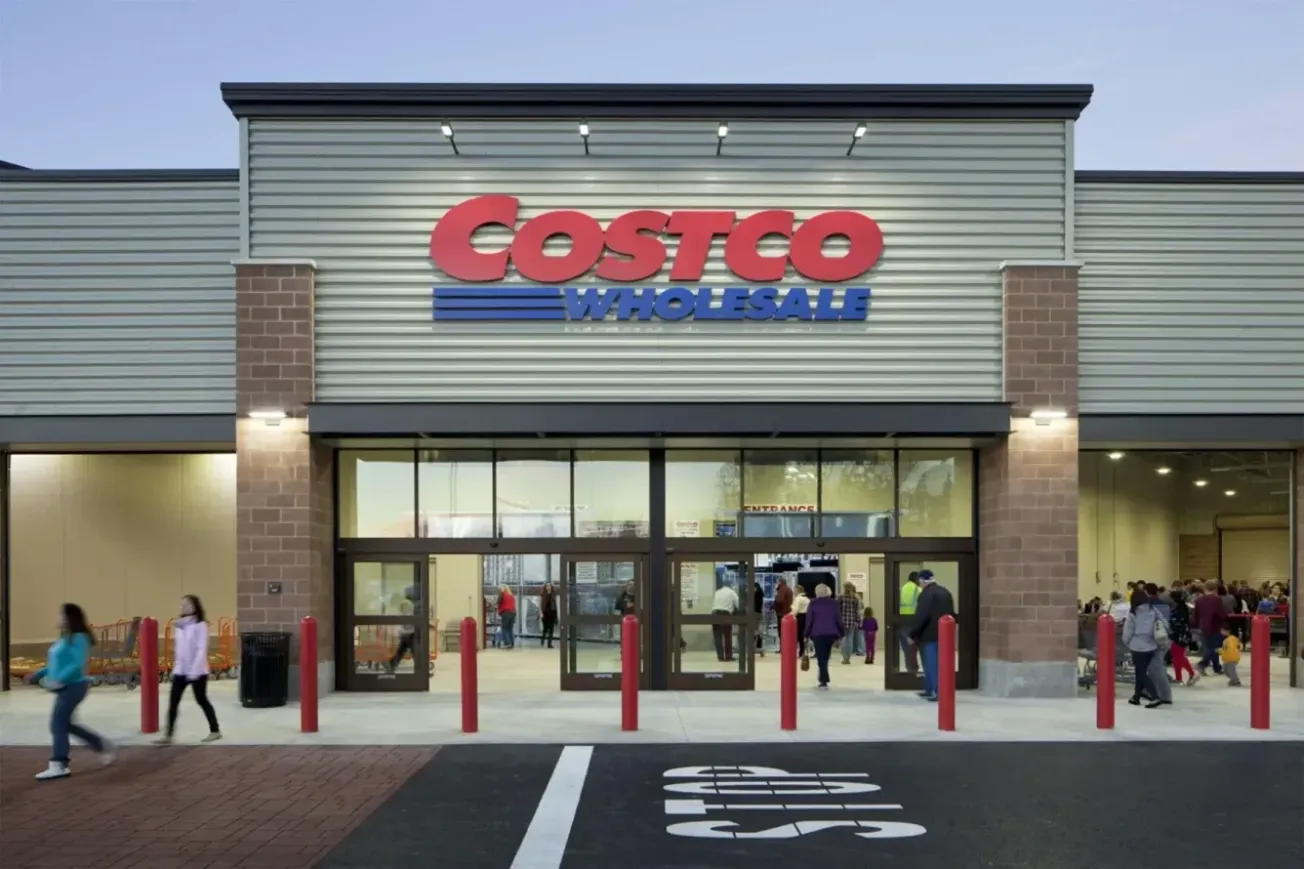AMITYVILLE, N.Y. — SheaMoisture manufacturer Sundial Brands has launched the second phase of its #BreakTheWalls platform highlighting divisive constructs of beauty.

SheaMoisture’s custom hair recognition tool
This time, the company is posing a direct challenge to beauty industry standards by asking: “What’s Normal?” This phase includes a complete suite of assets designed to collectively support the effort across all media platforms and on-the-ground activations. The elements include a 60-second short film; 30-second spot; first-to-market custom hair recognition tool; digital and social assets; and behind-the-scenes and interview footage that capture perspectives on what is considered normal in beauty, especially regarding hair type, texture and style. The footage features cast members; prominent beauty vloggers including Naptural85 and StyledByAle; and everyday women who have made headlines for defending their hair in the workplace, including Sgt. Jasmine Jacobs, who petitioned the U.S. military to change its policy banning natural hairstyles, and meteorologist Rhonda Lee, who was fired from the ABC affiliate in Shreveport, La., for responding to a comment about her natural hair. In the coming weeks, the Perception Institute will separately release a first-of-its-kind national study measuring implicit bias linked to differences in hair texture.
“With SheaMoisture’s launch of #BreakTheWalls earlier this year, we furthered our 25-year mission to spark meaningful conversation and action towards true inclusion and a more empathetic mind-set in the beauty industry and our society, which includes bringing down both literal and metaphoric walls,” said Richelieu Dennis, founder and chief executive officer of Sundial Brands. “With our first iteration, we showed the physical walls coming down. With ‘What’s Normal?’ we are confronting the mental walls that encourage us to force fit ourselves and others into falsely constructed beauty and ‘good hair’ ideals. By questioning the very concept of a normal standard, especially as it applies to beauty and to hair type or texture, we can begin to see how arbitrary, narrow and potentially destructive it is and course-correct ourselves on a path to where everybody gets love. Our forward track must focus on including everyone, embracing everyone and celebrating the beauty — and normalcy — of everyone’s differences.”
This acknowledgement and recognition of different need states, hair types and cultures have been at the core of SheaMoisture’s strategy from the start. Over the course of almost three decades in the U.S., the brand has continued to develop new formulations and introduce more culturally relevant ingredients to the industry based on listening to the needs of its community and cocreation with its retail partners. SheaMoisture now offers upwards of 500 products made with natural, certified organic and fair trade ingredients to meet individual need states across body, face, shave, cosmetics, men, baby and hair. For hair alone, the brand has an offering of more than 150 different products for a range of types, textures, conditions and styles.
As part of the brand’s ongoing commitment to addressing women’s lifestyle needs wherever they are, SheaMoisture invested in the technology to build the first hair recognition tool of its kind on the market — “Good Hair Day” (www.amillionwaystoshea.com). The “Good Hair Day” tool provides each SheaMoisture community member and visitor the benefit of anytime, “at-a-click” personalized recommendations to easily match their hair need with a specific product and quickly navigate the vast hair offerings to find their “way to Shea.” Specifically, the tool delivers individual product recommendations to each user based on their hair type, style, condition and goals. Once a user uploads a photograph or selfie on the site, it uses an innovative hair recognition technology that automatically identifies the user’s hair type and/or style. Through a brief three-step process, the tool then matches the user with a custom hair care regimen tailored to her specific hair needs around maintenance (cleansing/conditioning), treatment (restoring/renewing) and styling (shaping/finishing).
“We are constantly iterating on our approach to what are considered ‘industry’ standards and what we hold as ‘our’ standards — testing, learning and growing as we work to serve her better,” said Dennis. “Even when we’ve conducted limited-run label tests using ‘normal’ on our packaging, the results have shown an overwhelming preference for need state versus normal because of its exclusionary nature. We have always focused on how to innovate and serve women according to their individual needs and where they are at any stage of their lives. This is why the women who use SheaMoisture have such a special relationship with the brand. She knows we are listening to determine what she wants, what she’s missing, and what her hair and skin challenges are. She knows the products actually work for her because they were formulated for her needs — not an ill-defined normal.”
In addition, Perception Institute, a consortium of social psychologists and strategists who use research on how our brains respond to differences in race, ethnicity, and gender to understand and disrupt harms linked to those identities, has conducted a first-of-its kind hair study measuring the implicit biases linked to hair. Implicit bias, the automatic association of stereotypes or attitudes toward particular groups, is measured by taking an implicit association test, or IAT (implicit.harvard.edu). Hundreds of studies over the last two decades have confirmed that many people have implicit biases linked to race and gender that are rooted in pervasive societal stereotypes. Implicit bias affects how we perceive and treat others, sometimes in ways that have serious consequences.
However, to date, no one has examined implicit biases linked to hairstyles worn by black women. Leveraging insights from and images (stimuli) provided by SheaMoisture’s hair and beauty experts, Perception Institute, led by executive director Alexis McGill Johnson, created the first-ever “Hair IAT” to measure whether implicit bias against black women’s natural hair exists, as well as an extensive explicit survey to assess how the public feels about the beauty and professionalism of black women’s hairstyles. Findings from the study, based on a 4,000-person national sample, will be released in the coming weeks.
“Perception Institute’s study will be one of the most meaningful and extensive pieces of independent research to hit the beauty industry to date,” said Dennis. “With increasing headlines around the world highlighting natural hair restrictions and intolerance in the workplace, schools and society at large, it is critical that as a society we understand hair bias and the role it plays in how we view others, the value we place on them and our expectations of them to fit into a singular view of ‘normal.’ My hope is that the insights gleaned from this seminal study will be a turning point in the beauty industry’s evolution from making people feel good about themselves to also transforming how they see — and thus treat — themselves and others.”
 “What’s Normal?” continues to reinforce SheaMoisture’s focus on what it has coined as the New General Market, which is defined by inclusion and commonalities via need states. The New General Market approach ensures that all consumers, especially those who have been traditionally underserved, have an enhanced experience of accessibility, choice and inclusion according to their needs, not traditional segmentation. SheaMoisture has partnered with retailers, as well as other consumer packaged goods and consumer companies, to lead the introduction of this problem-solution approach to the industry and impact the way they engage with their customers in a more meaningful way.
“What’s Normal?” continues to reinforce SheaMoisture’s focus on what it has coined as the New General Market, which is defined by inclusion and commonalities via need states. The New General Market approach ensures that all consumers, especially those who have been traditionally underserved, have an enhanced experience of accessibility, choice and inclusion according to their needs, not traditional segmentation. SheaMoisture has partnered with retailers, as well as other consumer packaged goods and consumer companies, to lead the introduction of this problem-solution approach to the industry and impact the way they engage with their customers in a more meaningful way.
SheaMoisture worked with award-winning creative agency Droga5 to develop both the “Break The Walls” and “What’s Normal?” films, which celebrate the positive changes women are experiencing in the beauty industry and are a rallying cry to join together to continue to reshape the beauty landscape — from a dated model of “standardized ideals” to one of inclusive representation at shelf and beyond.
“One of the most exciting and humbling aspects for us during the creation of ‘What’s Normal?’ was the continued chorus of courageous, confident, defiant and self-accepting women who shared their stories, their insecurities and their triumphs with us,” said Dennis. “They were so deeply poignant that we were compelled to again develop the script for the film using a compilation of sound bites taken from our cast members’ interviews. So, we are still telling her story through her eyes and with her voice — and nothing is more powerful.”
The film can be seen here, and behind the scenes footage is available here.






